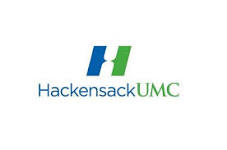The "Peripheral Access Utilizing Sonographic Evaluation" Study
| Status: | Withdrawn |
|---|---|
| Healthy: | No |
| Age Range: | 21 - Any |
| Updated: | 8/5/2018 |
| Start Date: | February 2015 |
| End Date: | January 19, 2017 |
The purpose of this study is to reduce, by using the ultrasound guided technique, the minor
surgical procedures that might be required to deliver fluids into the blood of critically ill
patients simply because the patients' veins cannot be located through the manual technique.
surgical procedures that might be required to deliver fluids into the blood of critically ill
patients simply because the patients' veins cannot be located through the manual technique.
The purpose of this study is to reduce, by using the ultrasound guided technique, the minor
surgical procedures that might be required to deliver fluids into the blood of critically ill
patients simply because the patients' veins cannot be located through the manual technique.
The ultrasound assisted technique will increase accessibility to small veins that might be
missed via the manual technique. The technique of using an ultrasound machine to assist the
administration of fluids into a patient's veins is called ultrasound guided peripheral
intravenous access (USGPIVA), while the traditional technique that uses only sight and touch
to locate a patient veins without machine assistance is called the traditional landmark
technique (TLT). The investigators will compare the effectiveness of USGPIVA with TLT in
terms of reducing complications and costs.
surgical procedures that might be required to deliver fluids into the blood of critically ill
patients simply because the patients' veins cannot be located through the manual technique.
The ultrasound assisted technique will increase accessibility to small veins that might be
missed via the manual technique. The technique of using an ultrasound machine to assist the
administration of fluids into a patient's veins is called ultrasound guided peripheral
intravenous access (USGPIVA), while the traditional technique that uses only sight and touch
to locate a patient veins without machine assistance is called the traditional landmark
technique (TLT). The investigators will compare the effectiveness of USGPIVA with TLT in
terms of reducing complications and costs.
Inclusion Criteria:
- The patient is >= 21 years of age
- Adult critically ill patients in CCU and MICU requiring short peripheral intravenous
access
- The patient has been identified as difficult intravenous access (DIVA), defined as at
least two failed blind sticks in the antecubital fossa or more distal upper arm veins
- The patient does not otherwise require a CVC
Exclusion Criteria:
- The patient has a PICC line on the same side as IV placement and has the following:
- Has a condition poses risk for DIC, inadequate flow, or infection.
- Has been identified as a site for "Save the Vein" protocol implementation, unless
permission is otherwise obtained by the patient's physician.
- Has a hemodialysis fistula in place on that upper arm side.
- The patient is expected to require therapeutic agent or procedure that necessitates
central venous access such as:
- central venous monitoring
- Total Parenteral Nutrition
- Antibiotic requiring central venous access
- Chemotherapy
- Vesicants
- Medications pH less than 5 or more than 9
- Medications of glucose concentrations above 10%
- Solution with protein concentrations above 5% (Vascular Access Management, n.d.)
- The patient already has a central venous catheter access, for reasons other than DIVA,
through which therapy can be infused
- The patient has renal disease and a "Save The Vein" order is anticipated or pending
(serum creatinine >2mg/dL and GFR <20) for one of the patient's arms, unless
permission is otherwise obtained by the patient's physician
- The patient has a bleeding disorder, unless permission is otherwise obtained by the
patient's physician
- The clinician believes the patient is not a good fit for the study or that the
procedure is not appropriate for patient at the given moment
We found this trial at
1
site
Hackensack University Medical Center Hackensack University Medical Center, part of the Hackensack University Health Network,...
Click here to add this to my saved trials
